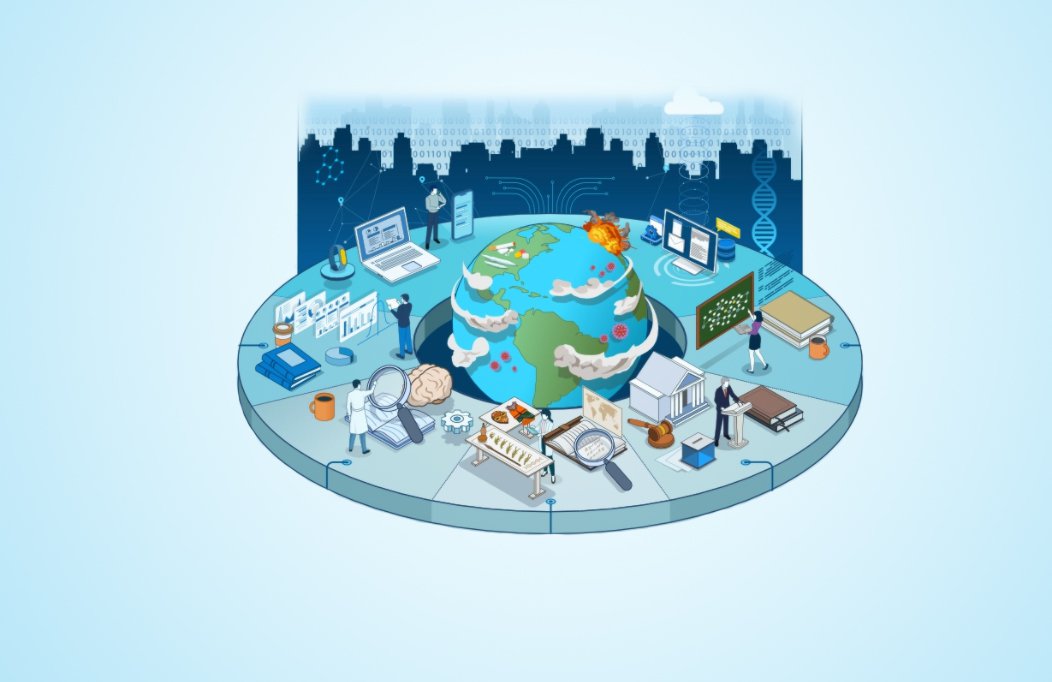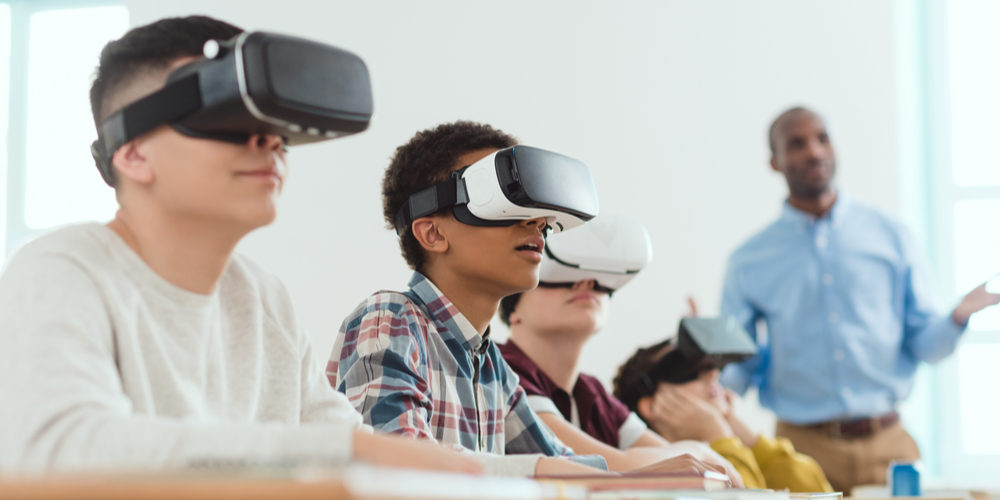Although the education system has always been strongly influenced by innovations, the explosion of new technologies caused tectonic shifts in the way the teaching process is carried out in school.

Many technology enthusiasts believe that changes in the education system can only go forward due to an incredible growth in the number of inventions that are continuously changing the description of existing professions. In this regard, many believe that abandoning traditional classroom education altogether is almost certain in the near future, noting that traditional education will not be able to adequately prepare students for the new challenges and demands of the real world.
However, sceptics often argue that we should be careful with the immediate implementation of modern technologies in the classroom, primarily because of the potential consequences, such as widening of an existing social gap, an increased number of individuals who suffer from mental illness, and the regression of children’s cognitive and academic development that may prove irreversible.
Taking into account the arguments of both sides, we will present a list of advantages and disadvantages of technology in education below, and explain how it impacts today’s students.
Advantages of technology in education
Looking back over the last hundred years, introducing technology into the classroom has been a blessing only for younger students and teachers. In other words, with a sudden introduction of a wide range of devices and the Internet, students got the opportunity to make the learning process much easier and more interesting. Key benefits of technology in education include:
Provides a better interactive experience during the learning and teaching process
With the introduction of mobile phones, tablets and computers, students are now able to do something they should have been able to do long ago – to learn actively and productively. For the first time, students can access a subject/teaching unit with enthusiasm thanks to applications, videos, simulations and digital books that make the learning process much more engaging. Moreover, having the opportunity to dig deeper into an area that interests them allows them to potentially recognize their interests and talents, and maybe even their future profession.
Provides access to an unlimited amount of current information and data from a variety of sources
In addition to the fact that students approach learning with more enthusiasm and productivity, they also have the opportunity to access the most current topics and research, which is something their ancestors could only dream about. Instead of going from library to library, dragging a pile of books with them, they are just a few clicks and well-defined queries away from accessing information that can give them additional insight into the topics they are covering at school. So, this practice not only enables students to have a modern education, but it also teaches them how to approach the search for information and read complex professional literature.
Teaches them digital literacy
We all know that young people cannot acquire the level of skill demanded by today’s corporate world in computer science classes. By implementing technology as an integral part of education, students are given the opportunity to keep up with learning trends and acquire technological/digital skills that are highly sought after in the 21st century. This form of learning is most helpful for students who don’t have access to modern technology at home, which could also potentially reduce the social gap between digitally literate and illiterate people.
Reduces educational costs
With the introduction of technology in education, resources have become more accessible, which resulted in declining tuition fees, the need for books and their price, as well as the reduced need for school supplies. The introduction of e-books has made things easier for low-income families, and helped students to approach learning on equal terms with their peers, without parental pressure for high performance arising from large investments into their child’s education.
In addition, another positive side-effect of using e-books in education is the fact that they indirectly contribute to the reduction of deforestation, which is one of the major environmental problems.
Provides better insight into student performance thanks to metrics
In the past, teachers had to spend considerable time evaluating the overall academic performance of each student, which proved to be very impractical, especially in large classes with over 20 students. Unfortunately, many students never succeed in correcting the wrong steps in learning that can help them improve their performance, and potentially discover their talents of affinities.
However, with the introduction of digital technologies and the Internet in the classrooms, a teachers’ job of analyzing student performance and providing guidelines and advice has become much easier, which is a win-win situation both for teachers and students. Specifically, thanks to platforms that collect data on student performance in class, tests, and assignments, teachers have clear insight into the areas students struggle with, or excel at. Moreover, teachers are now able to modify lessons based on insights into the performance of individual students, or class as a whole.
They can choose between real-time learning or learning at their own pace
Technology in education has allowed students to gain control over their learning, but it also provided flexibility to teachers in transferring knowledge to students. Namely, this practice is only possible in schools that support hybrid (blended) learning, i.e. a combination of synchronous real-time learning, and asynchronous learning where students can listen to a lecture when they choose.
Listening to a teacher giving a lesson in real time provides students with a stronger sense of belonging, and allows them to socialize with their peers, same as face-to-face interaction with the teacher. On the other hand, more independent students who are confident in their own time management and commitment management skills can learn whenever they feel like it.
Disadvantages of technology in education
It is great to be optimistic and believe in the continuous advancement of technology, however, it is equally important to not lose sight of the negative sides of technology in education, and how it can cause long-term problems for young people. Namely, many sceptics from the domain of social sciences and humanities often point out several potential disadvantages of technology in education, and how it can negatively affect certain aspects, and the quality of children’s life and development:
It is distracting both in the classroom and outside of it
Proponents of technology in education often forget that students continue to use their mobile phones and tablets throughout the day, long after they’ve completed their school activities. Namely, with the daily dosage of social media and video games, children’s brains are accustomed to entertaining, intensive, and short-term content that can quickly stimulate their dopamine system.
The biggest problem here is the fact that daily interaction with technological devices reduces attention span, and research shows that the attention span of children from Generation Z is about 8 seconds. Although teachers may have good intentions, the use of applications that have nothing to do with the teaching process itself should be restricted, and technology should be used in class only when absolutely necessary.
Potentially diminishes cognitive development and reduces problem-solving skills
Technology always has a good intention, to reduce the time and make it easier to perform certain mechanical activities. However, technology has automated almost all school activities. Why would a child need to learn the basics of math, when they can use a calculator on their phone, or why would they need to learn spelling, when they have autocorrect software?
So, what was originally a positive intention has led to the situation that new generations will be unable to perform everyday cognitive activities without technology. In addition, it should be noted that when children use technology to solve every problems at school, they gradually lose their problem-solving abilities, which is a highly sought-after set of skills. The only solution to this problem is to have teachers and educational institutions as a whole impose restrictions on the use of technology in education.
Reduces direct peer interaction
Although digital technologies have been shown to improve student advancement, and project collaboration, they, however, disregard our biological need for interaction in real time. Namely, we have lived as social beings for over tens of thousands of years, and we now think that we can trick our genetic predisposition so easily.
Although young people interact with their parents, teachers and peers, the percentage of adolescents with a diagnosis of some form of depression has been growing, and has now reached a staggering 20%. The only solution that teachers and educational institutions can offer is to encourage young people to engage in face-to-face interaction with others.
Maintaining modern technology is very expensive
The cost of upgrading or maintaining technology is often overlooked. In a world where new innovations in the field of digital technologies appear almost every month, and where upgrading software and applications continuously requires more powerful devices, relying on the belief that technology in education is the only solution sounds overly confident.
Namely, teaching and learning can be done without technology, but the question is – how useful the acquired specific skills will be after a few generations of technological backwardness. So, in order to not regret the purchase of new technology, educational institutions are obligated to estimate the actual long-term costs of that investment, and how it will reflect on tuition fees that students and their parents need to pay.
It is easier to cheat in exams
A huge problem that teachers face is cheating on exams, and not having an insight into student knowledge of a lesson. This is also the biggest problem with online tests, because teachers often don’t know if students have access to another device while taking the test. This problem could have long-term consequences, primarily due to the inability of educational institutions to guarantee that the student actually possesses the knowledge needed for higher levels of education, or to do their job.
Reduced number of teachers due to automation and reduced salaries
With the introduction of technology in the curriculum, the role of the teacher as an authority figure and mediator is slowly fading. It should be noted that automation in education and the introduction of certain applications has led to a decrease in the number of teachers in modern schools. However, the remaining teachers have even more responsibilities than before, and their income is not increasing in proportion with their responsibilities, so many have had to give up their job.
As we said earlier, describing the advantages of technology in education, children have the opportunity to access a wide spectrum of information that makes lessons more engaging, but the question is, how long does it take to prepare and integrate that content into a meaningful whole? So, increased responsibilities mostly refer to the preparations for class, the importance and complexity of which are underestimated by many, primarily because it is not visible to parents.
The problem that needs to be addressed is that educational institutions should stop approaching teachers as manual laborers, and the first step toward that goal is increasing their salary and treating them with the respect they deserve, otherwise, we will have unmotivated teachers who don’t care about transferring knowledge to their students, and the consequence is a generation of individuals incapable of becoming useful members of society.
Final thoughts on the pros and cons of technology in education
Different people have different opinions on the introduction of these changes in the education system, especially if it’s done so suddenly and in such a short time. However, one should be realistic, because the advantages still far outweigh the disadvantages.
So, a continuous insistence on disadvantages should not be seen as a desire to return to traditional education, but as a reason for caution and the possibility to better see the holes in the technologies and methods used in education. It is up to educational institutions and teachers to analyze the disadvantages in the next revision, and improve the quality of teaching both in their digital and physical classrooms.












